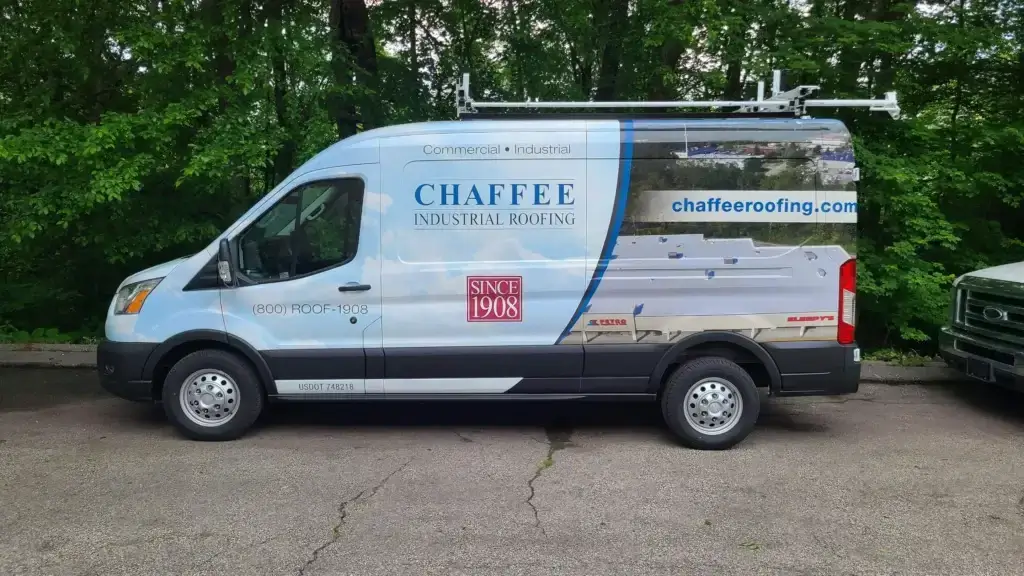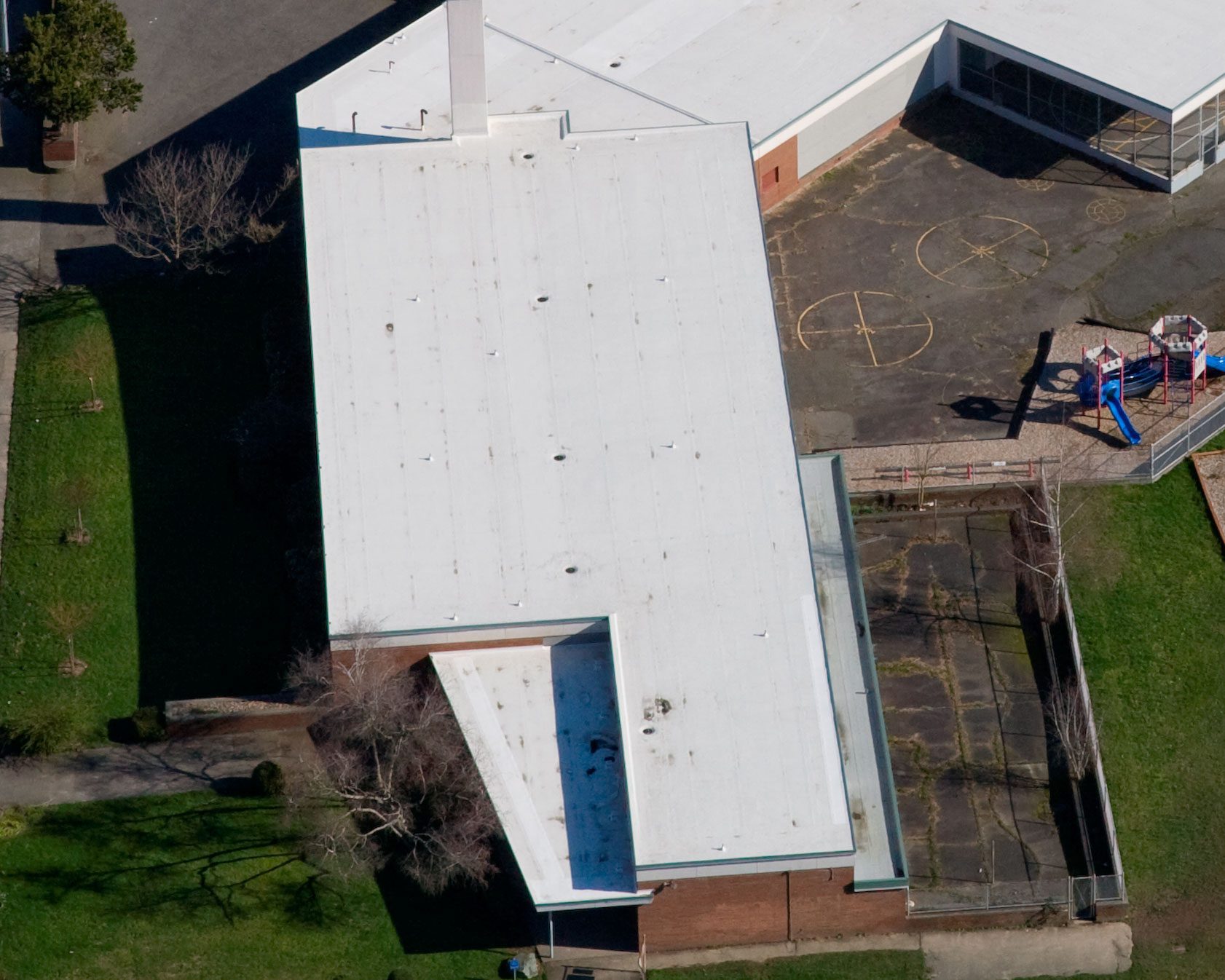PVC Roofing Systems have been installed since the 1960’s and was one of the first single ply materials used in roofing. PVC Roofs come in thicknesses from .036 mil to .090 mil, can only be reinforced. PVC is typically white, tan or gray in color. A PVC membrane installation can be mechanically attached, fully adhered, Rhinobond or ballasted.
Like TPO roof systems, PVC Membrane rolls and flashing membrane are heat welded together, creating the strongest bond available in a roofing system. A PVC Roof installation is heat welded together using computerized hot air equipment that reaches temperatures of around 800 degrees in the seams. For welding the seams on open membrane rolls, an automatic “robotic” welder is used that automatically sets the correct temperature, applies the perfect pressure, and sets the best speed to perfectly weld the two membrane sheets together. For smaller areas, like rooftop units and curbs, a hand-held heat welding gun is used, along with a rubber roller. These smaller detail areas rely heavily on the craftsmanship of the roofing mechanic to achieve the correct temperature, pressure and speed required for a perfect weld.
Benefits of a PVC Roof
PVC Roofing systems have solid strengths. Some Benefits of a PVC Roof are:
- Proven system that has been around for over 60 years.
- Strongest seams available, which is typically the weakest point in a roof system
- Resistant against a variety of chemicals.
- White, Tan and Grey PVC roofs are much cooler than comparable black EPDM roof systems, which is beneficial to HVAC units and other rooftop equipment.
- On higher end PVC roof systems, puncture and grease resistance can be exceptional. However, this often comes at a big premium. Ask about KEE PVC roof systems.
Drawbacks of a PVC Roof
In the roofing industry, PVC roof systems are being overtaken by TPO, because TPO holds many of the same strengths of PVC without many of the drawbacks. PVC system drawbacks include:
- More expensive than TPO Roof systems or EPDM roof systems.
- Can shatter under cold conditions. This it typically limited to spot shatters on older PVC systems.
- PVC membrane can shrink over time, causing the membrane to pull from walls, rooftop units, etc.
- Effective welding requires extensive experience. Only the best contractors should be considered for installing a TPO Roofing System.
Contact Us
Get A Free Consultation Today!
Whether you have a question about types of roofs, the roofing process, or want to discuss your needs further, please fill out this brief form below, and someone will be in touch with you within 24 hours.
If you need immediate assistance our Emergency Phone is: 401-432-7670
"*" indicates required fields

